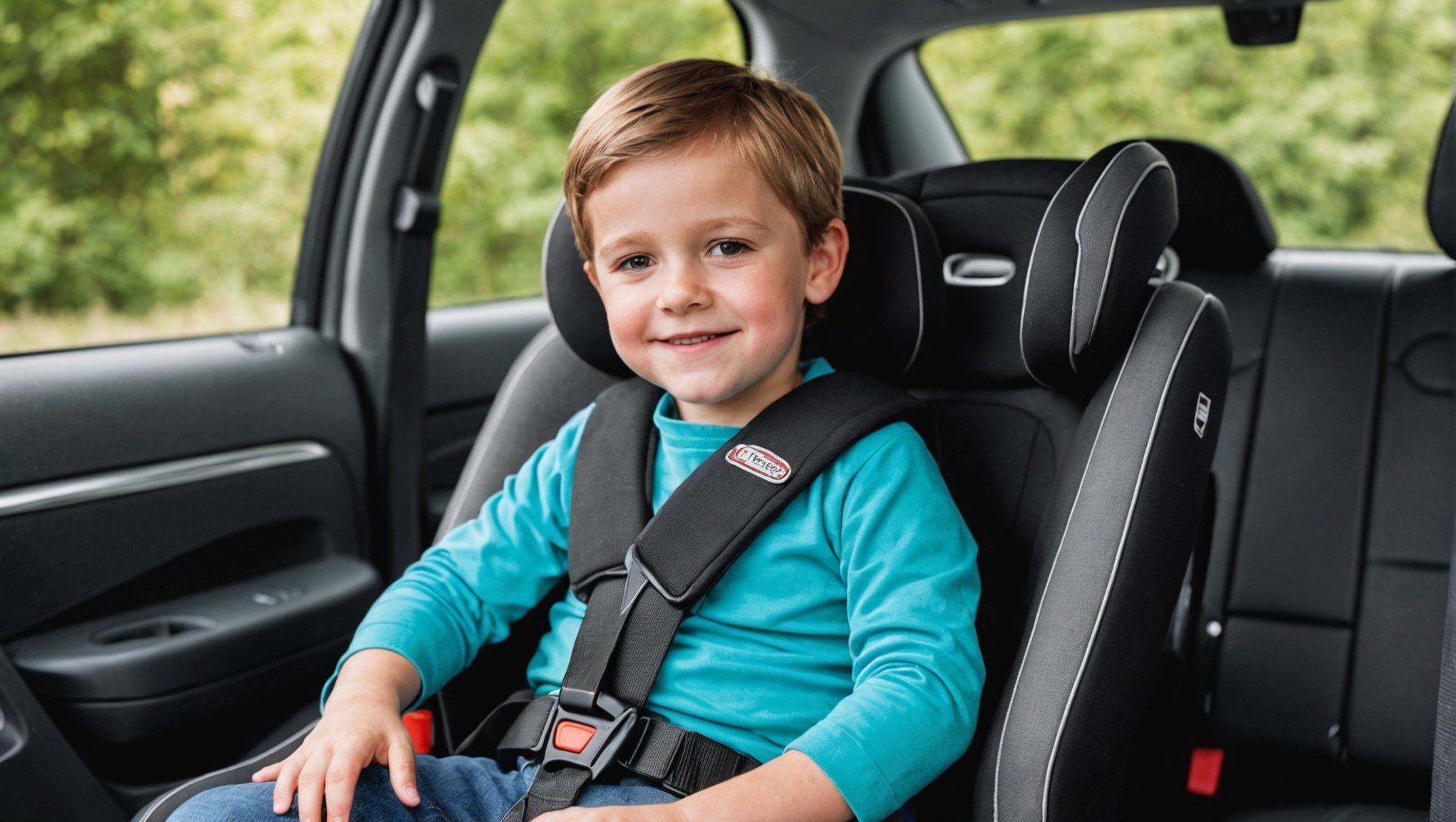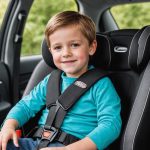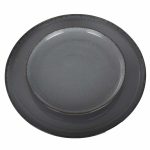Choosing the right booster seat for older kids can feel overwhelming for UK parents. With various options available, understanding safety guidelines, age requirements, and features is essential. This guide simplifies the selection process, helping you make informed choices that prioritize your child's safety and comfort. Discover tips to ensure your booster seat meets legal standards while catering to your child's growing needs. Let’s empower you to pick the perfect fit for your family's journey.
Understanding UK Laws and Regulations for Booster Seats
Navigating the UK booster seat laws is essential for ensuring the safety of children in vehicles. The legislation mandates that children must use a child car seat until they are 12 years old or 135 centimetres tall, whichever comes first. This regulation is part of the broader child car seat regulations aimed at safeguarding young passengers.
This might interest you : Unlocking Classic Car Status: Essential Criteria for UK Vehicles
Age and Weight Requirements
The booster seat age requirements specify that children aged between 4 and 12 years, or weighing 15 to 36 kilograms, should use a booster seat. These seats are designed to elevate the child so that the vehicle's seat belt fits properly over their shoulder and lap, reducing the risk of injury in the event of a collision.
Consequences of Non-Compliance
Failing to adhere to these regulations can result in penalties. Drivers found in violation of the child car seat regulations may face fines. More importantly, non-compliance puts children at risk, as improperly restrained children are more vulnerable to injuries in accidents. Understanding and following these laws not only ensures compliance but also enhances the safety of young passengers.
Have you seen this : What are the advantages of leasing versus buying a car in the UK?
Safety Standards and Ratings for Booster Seats
In the UK, booster seat safety ratings are governed by strict standards to ensure the protection of young passengers. Two primary regulations are the ECE R44/04 and the i-Size standards. ECE R44/04 focuses on weight-based categories, while i-Size emphasizes height and offers enhanced side-impact protection. Understanding these standards helps parents select the safest option for their children.
Crash test standards play a crucial role in determining the safety of booster seats. These tests simulate real-world collisions to assess how well a seat protects a child. Factors like the seat's ability to absorb impact and maintain proper restraint are evaluated. High crash test ratings indicate superior protection, guiding consumers in making informed choices.
When selecting a booster seat, it's vital to check for safety certifications. These certifications, often displayed on labels, confirm that the seat meets or exceeds regulatory requirements. The label might include the standard it complies with, such as ECE R44/04, and a unique approval number. By understanding and interpreting these certifications, parents can ensure they are choosing a seat that provides optimal safety for their child.
Key Considerations for Selecting a Booster Seat
Choosing a booster seat requires careful consideration of several factors to ensure both safety and comfort for your child. First, focus on booster seat features such as size and weight limits. It's crucial to select a seat that accommodates your child's current measurements and allows for growth. Compatibility with your vehicle is also vital; not all booster seats fit all cars, so checking the seat's dimensions against your vehicle's specifications is essential.
Child Comfort and Support
Child comfort is a significant aspect of booster seat design. A comfortable child is less likely to fidget, which can help maintain the correct seating position. Look for seats with ample padding and ergonomic support. Features like an adjustable headrest and armrests can enhance comfort, ensuring that the seat grows with your child and remains comfortable on longer journeys.
Safety and Usability Features
Safety features are paramount when choosing a booster seat. Prioritise seats with high safety ratings and those that include features enhancing usability, such as easy installation systems and clear belt guides. An adjustable headrest not only supports comfort but also ensures the seatbelt fits correctly as your child grows, providing consistent protection.
Installation Tips for Booster Seats
Installing a booster seat correctly is crucial for your child's safety. Follow these installation guidelines to ensure a secure fit.
Step-by-Step Guide
-
Position the Seat: Place the booster seat on the vehicle's back seat. Ensure it's centred and flat against the backrest.
-
Secure the Seatbelt: Thread the vehicle's seatbelt through the designated guides on the booster seat. The lap belt should rest snugly across your child's thighs, not the stomach.
-
Check the Shoulder Belt: The shoulder belt must lie across the chest and shoulder, away from the neck.
Common Installation Mistakes to Avoid
-
Loose Seatbelt: Ensure the seatbelt is tight and secure. A loose belt can compromise safety.
-
Incorrect Positioning: Avoid placing the booster seat on the front seat or sideways.
-
Skipping Instructions: Always refer to the manufacturer's manual for specific details.
Ensuring Stability
To confirm the booster seat is stable, perform a quick shake test. The seat should not move more than an inch side-to-side or front-to-back. Regularly check the seat's position and the seatbelt's tension to maintain safety standards.
Comparison of Popular Booster Seat Brands and Models
When selecting the best booster seats UK, understanding the landscape of popular brands is crucial. In the UK market, several brands stand out due to their robust safety features and user-friendly designs. Among these, Britax Römer, Maxi-Cosi, and Graco consistently receive top marks in booster seat reviews.
Brand Overview
-
Britax Römer: Known for its advanced safety technologies, Britax Römer offers models with excellent side-impact protection and easy installation features. Their seats often feature adjustable headrests and superior padding for enhanced comfort.
-
Maxi-Cosi: This brand is celebrated for its innovative designs and high safety ratings. Maxi-Cosi booster seats frequently include ISOFIX compatibility, ensuring a secure fit in most vehicles.
-
Graco: Offering a balance of affordability and quality, Graco's models are praised for their durability and ease of use. They provide features like cup holders and reclining options, adding convenience for long journeys.
User Reviews and Expert Opinions
User reviews often highlight the practicality and reliability of these brands. Experts commend Britax Römer for its focus on safety, while Maxi-Cosi is lauded for its user-friendly features. Graco is appreciated for offering value without compromising on essential safety standards.
Practical Advice for Ensuring Child Safety and Comfort
Ensuring child safety in cars requires attention to detail and regular maintenance. Proper seatbelt usage is paramount; always ensure the seatbelt is correctly positioned over your child's shoulder and lap. This reduces the risk of injury during travel. Booster seat comfort tips include choosing seats with adequate padding and adjustable features, such as headrests and armrests, to accommodate your child's growth and enhance comfort.
Maintaining Booster Seats
Keeping the booster seat clean and well-maintained is essential for both safety and hygiene. Regularly vacuum the seat to remove crumbs and debris. For deeper cleaning, follow the manufacturer's instructions for washing the seat cover and wiping down the frame with a damp cloth. This not only prolongs the life of the seat but also ensures a hygienic environment for your child.
Regular Checks and Adjustments
As your child grows, it's crucial to regularly check and adjust the booster seat. Ensure the seatbelt still fits correctly and that the seat's features, like the headrest, are appropriately adjusted. Regularly inspect the seat for wear and tear, replacing it if any safety features are compromised. This vigilance ensures ongoing protection and comfort for your child.
Resources and Further Reading
Navigating the world of booster seats can be complex, but numerous booster seat resources are available to assist parents. These resources not only provide valuable insights but also ensure that you are making informed decisions for your child's safety.
Reputable Websites and Organizations
Several UK car seat safety websites offer comprehensive information on booster seats. The Royal Society for the Prevention of Accidents (RoSPA) provides detailed guidance on selecting and using booster seats correctly. Additionally, the Child Accident Prevention Trust (CAPT) offers resources focused on preventing injuries in children, including car safety tips.
Recommended Reading Materials
For parents seeking more in-depth knowledge, consider exploring books and guides on child car safety. Titles like "The Car Seat Book" by Jennie Rosén and "Keeping Kids Safe: A Parent's Guide to Child Safety" provide practical advice and are highly recommended for further reading.
Product Reviews and Safety Rating Databases
To ensure you choose the best booster seat, consult safety rating databases such as Which? and ADAC. These platforms offer unbiased reviews and ratings, helping parents compare different models based on safety features, ease of use, and overall performance. Engaging with these resources empowers parents to make the best choices for their child's safety.
Expert Opinions and Insights
Understanding booster seat selection can be daunting, but child safety experts provide invaluable guidance. These professionals emphasise the importance of choosing seats that align with your child's growth and vehicle specifications. A booster seat expert advice often highlights the necessity of considering both safety ratings and comfort features to ensure optimal protection and usability.
Addressing Common Misconceptions
Professionals frequently address misconceptions about booster seats. One prevalent myth is that any seat will suffice as long as the child fits. Experts clarify that not all booster seats are created equal; selecting one that meets safety standards and fits your vehicle is crucial. They also stress the importance of using booster seats until a child reaches the height or age requirement, not just when they appear too big for the seat.
Recommendations from Parenting Experts
Parenting expert recommendations focus on integrating booster seats into daily routines seamlessly. They suggest involving children in the selection process to increase their comfort and acceptance. Experts advocate for regular checks to ensure the seat is correctly installed and adjusted as the child grows. This proactive approach ensures ongoing safety and comfort, reinforcing the importance of booster seats in safeguarding young passengers.
















